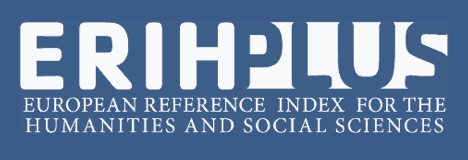ANALYSIS OF MAIN COMPONENTS APPLIED TO THE IDENTIFICATION OF SOCIO-ENVIRONMENTAL VULNERABILITY IN THE URBAN AREA OF LONDRINA / PR
Abstract
Socio-environmental analyzes seek the interrelation of economic, social and environmental aspects and the balance between them. Therefore, the objective of this work is to identify the socio-environmental vulnerability of the urban area of Londrina at the level of the census sector, delimiting the proximity to the water bodies and the use of the statistical method of Principal Component Analysis. Maps of social, environmental risk and socio-environmental vulnerability were generated, where it was found that sectors located near to water bodies represented high and very high vulnerability. However many of these sectors had low or very low social vulnerability. In view of the analysis, it was found that the variables that showed greater influence in the definition of vulnerability, are mainly related to the disposal of garbage, toilets and water supply.
References
ALMEIDA, L. Q. Por uma ciência dos riscos e vulnerabilidades na geografia. Mercator, Fortaleza, v. 10, n. 23, p. 83-99, set./dez. 2011.
ALVES, H. P. F. Desigualdade ambiental no município de São Paulo: análise da exposição diferenciada de grupos sociais a situações de risco ambiental através do uso de metodologias de geoprocessamento. Revista Brasileira de Estudos da População, São Paulo, v. 24, n.2, p. 301-316, jul./dez., 2007.
ALVES, H. P. F. Vulnerabilidade socioambiental na metrópole paulistana: uma análise sociodemográfica das situações de sobreposição espacial de problemas e riscos sociais e ambientais. Revista Brasileira de Estudos da População, São Paulo, v. 23, n.1, p. 43-59, jan./jun,2006.
ALVES, H. P. F.; TORRES, H. G. Vulnerabilidade socioambiental na cidade de São Paulo: uma análise de famílias e domicílios em situação de pobreza e risco ambiental. In: São Paulo em Perspectiva. v. 20, n. 1. São Paulo: Fundação Seade, 2006.
CUNICO, Camila. Do risco à adaptação: a identificação da vulnerabilidade socioambiental de Curitiba – PR. 2013. 269 f. Geografia (Doutorado em Geografia) - Universidade Federal do Paraná, Curitiba, 2013.
CUNICO, Camila; OKA-FIORI, Chisat. O estado de normalidade e o estado de exceção diante da importância das categorias de “vulnerabilidade”, “risco” e “resiliência”. Caminhos de Geografia. Uberlândia. V.15, n 52. P. 01-20.
CUTTER, S. L. Vulnerability to environmental hazards. Progress in Human Geography, v. 20, n. 4, p. 529-539, 1996.
FREITAS, C. M. et al. Vulnerabilidade socioambiental, redução de riscos de desastres e construção da resiliência – lições do terremoto no Haiti e das chuvas fortes na Região Serrana, Brasil. Ciência & Saúde Coletiva. 17(6):1577-1586, 2012.
MARCORI, S. J. Geografia em escala local: um estudo de caso do município de Londrina. PDE – Programa de desenvolvimento educacional. Londrina. p. 78-92. 2008
MEDEIROS, M. D.; ALMEIDA, L. Q. Vulnerabilidade Socioambiental no município de Natal, RN, BR. REDE – Revista eletrônica do PRODEMA Fortaleza, Brasil, v. 9, n. 2, p. 65-79, jul./dez. 2015.
MOSCOVICI, S. Natureza – Para pensar a ecologia. Rio de Janeiro: MAUAD X – Instituto GAIA, 2007. (Coleção EICOS). 254p.
PINTO, L. R. A abordagem socioambiental na geografia brasileira: particularidades e tendências. Tese (doutorado) - Universidade Federal do Paraná, Curitiba-PR, 2015.
VICINI, Lorena. Análise multivariada da teoria à prática / Lorena Vicini; orientador Adriano Mendonça Souza. - Santa Maria: UFSM, CCNE, 2005.

This work is licensed under a Creative Commons Attribution-NonCommercial 4.0 International License.
Policy Proposal for Free Access Journals
Authors who publish in this journal agree to the following terms:
a. Authors retain the copyright and grant the journal the right of first publication, with the work simultaneously licensed under the Creative Commons Attribution License which allows the sharing of the work with acknowledgment of the authorship of the work and initial publication in this journal.
b. Authors are authorized to take additional contracts separately, for non-exclusive distribution of the version of the work published in this journal (eg publish in institutional repository or as a book chapter), with acknowledgment of authorship and initial publication in this journal.
c. Authors are allowed and encouraged to publish and distribute their work online (eg in institutional repositories or on their personal page) at any point before or during the editorial process, as this can generate productive changes, as well as increase the impact and The citation of published work (See The Effect of Free Access).





















